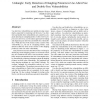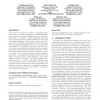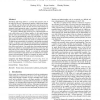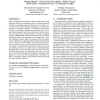116
click to vote
ISSTA
2012
ACM
13 years 3 months ago
2012
ACM
Use-after-free vulnerabilities are rapidly growing in popularity, especially for exploiting web browsers. Use-afterfree (and double-free) vulnerabilities are caused by a program o...
141
click to vote
ISSTA
2012
ACM
13 years 3 months ago
2012
ACM
To avoid receiving incorrect arguments, a method specifies the expected type of each formal parameter. However, some parameter types are too general and have subtypes that the me...
199
click to vote
ISSTA
2012
ACM
13 years 3 months ago
2012
ACM
Multithreaded programs are notoriously prone to unintended interference between concurrent threads. To address this problem, we argue that yield annotations in the source code sho...
102
Voted
ISSTA
2012
ACM
13 years 3 months ago
2012
ACM
133
click to vote
ISSTA
2012
ACM
13 years 3 months ago
2012
ACM
Identifying and fixing defects is a crucial and expensive part of the software lifecycle. Measuring the quality of bug-fixing patches is a difficult task that affects both func...
126
Voted
ISSTA
2012
ACM
13 years 3 months ago
2012
ACM
Over the last decade, there has been a significant increase in the number and sophistication of malware-related attacks and infections. Many detection techniques have been propos...
131
click to vote
ISSTA
2012
ACM
13 years 3 months ago
2012
ACM
Swarm testing is a novel and inexpensive way to improve the diversity of test cases generated during random testing. Increased diversity leads to improved coverage and fault detec...
136
Voted
ISSTA
2012
ACM
13 years 3 months ago
2012
ACM
Since web applications are easily accessible, and often store a large amount of sensitive user information, they are a common target for attackers. In particular, attacks that foc...
133
Voted
ISSTA
2012
ACM
13 years 3 months ago
2012
ACM
To keep a Graphical User Interface (GUI) responsive and active, a GUI application often has a main UI thread (or event dispatching thread) and spawns separate threads to handle le...
132
click to vote
ISSTA
2012
ACM
13 years 3 months ago
2012
ACM
We introduce the concept of “residual investigation” for program analysis. A residual investigation is a dynamic check installed as a result of running a static analysis that ...




